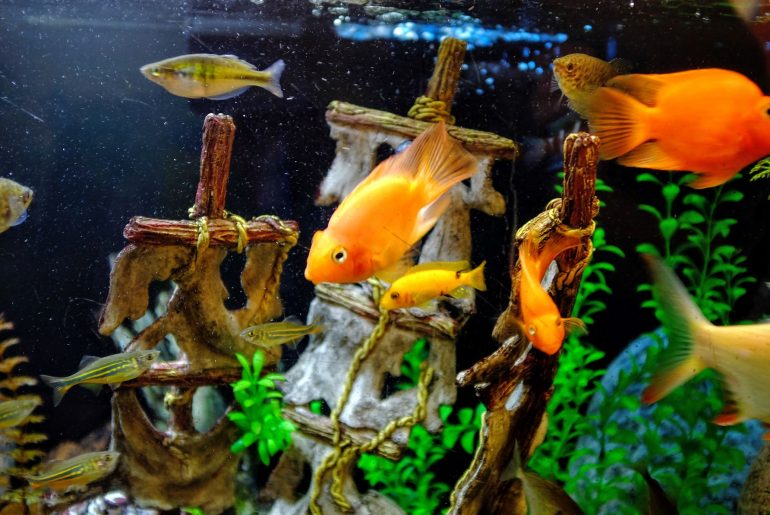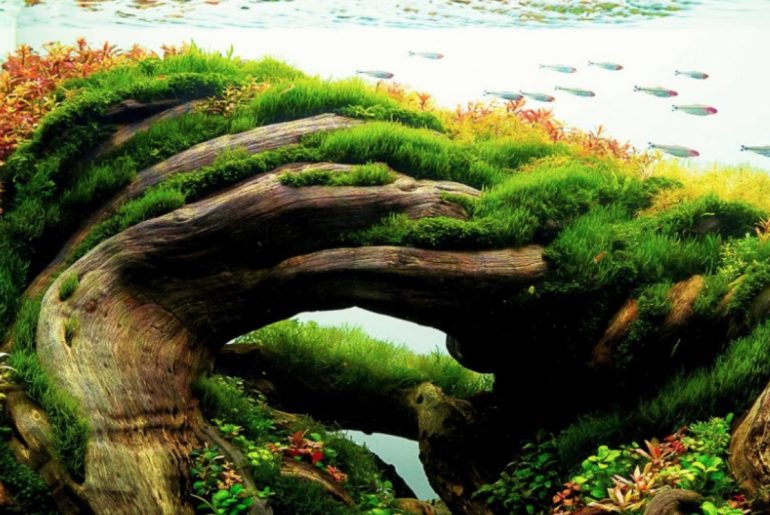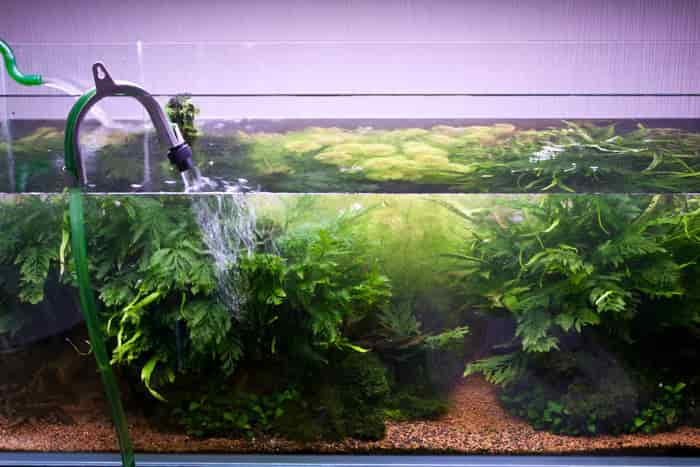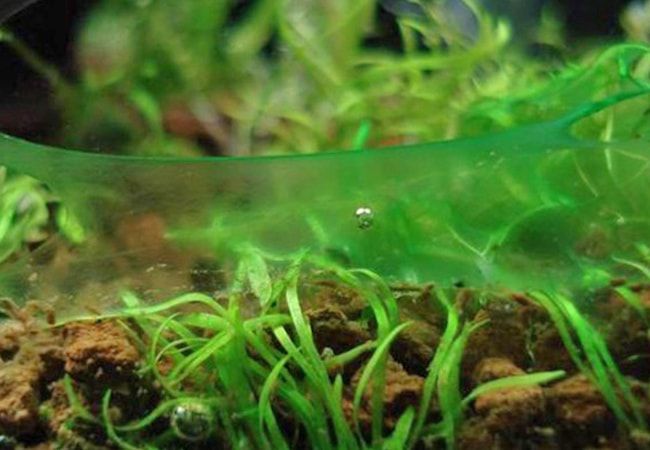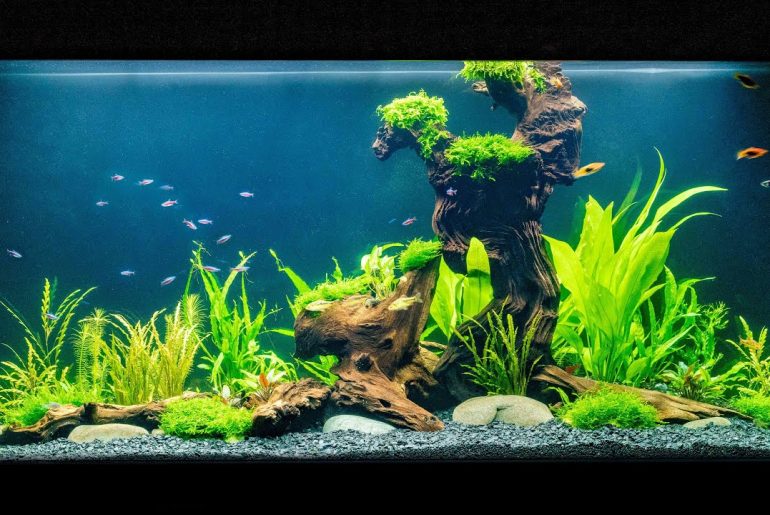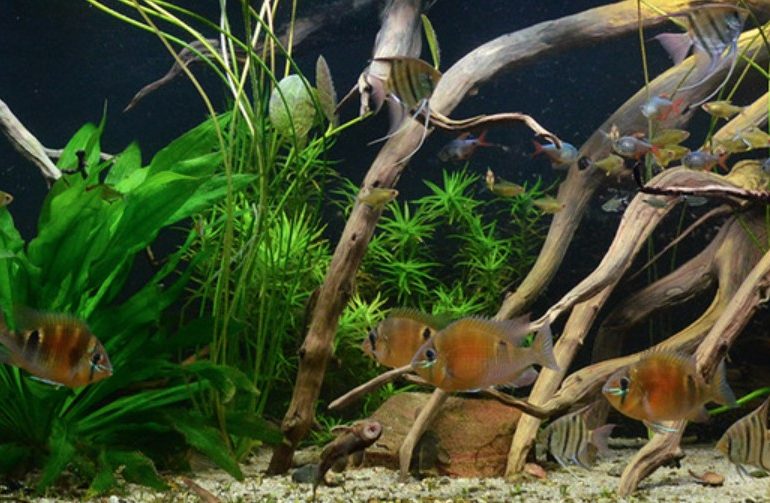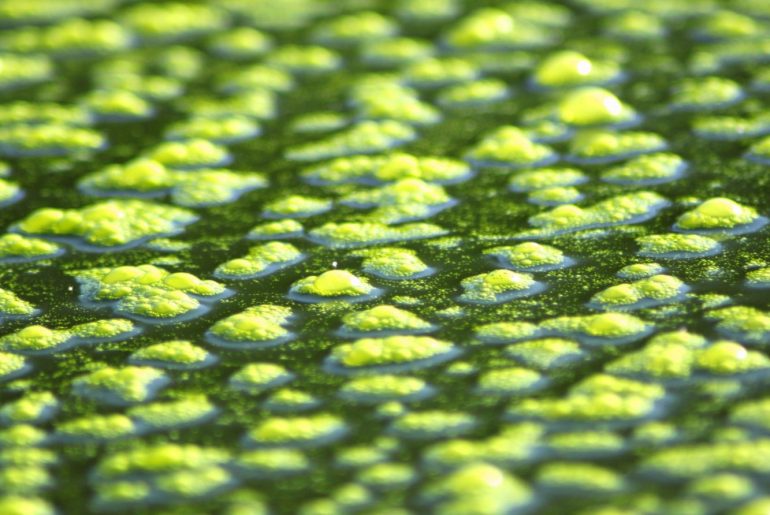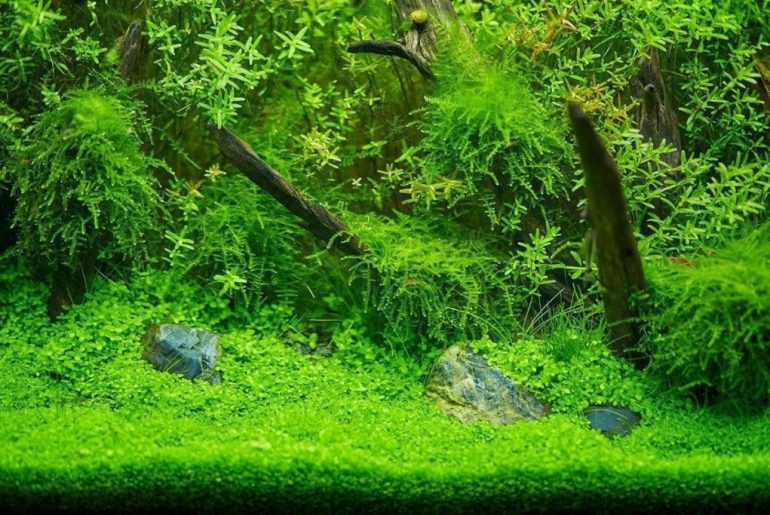In a functioning aquarium, organic material is broken down by microorganisms. Leftover food, dead plant matter or animal excretions are decomposed by bacteria. The end product of the nitrification chain is nitrate. The level of nitrate in the aquarium says a lot about the water quality and the biological balance.
The nitrogen cycle
Ammonia is excreted by the fish and reacts in the water to form ammonium. This is not toxic, but it can break down to highly toxic free ammonia at a pH above seven. Ammonia is broken down into nitrite (NO2). This in turn to nitrate (NO3).
Ammonia (NH3) > Nitrite (NO2) > Nitrate (NO3)
Ammonia: very toxic for fish (the optimal level is 0 mg/l, concentrations from 0.1 mg/l can be lethal for fish)
Nitrite: toxic for fish (the optimal nitrite level is 0 mg/l, concentrations of 1 mg/l and more can kill fish)
Nitrate: only toxic in high concentrations (values between 50 and 100 mg/l are still considered tolerable)
Too much nitrate in the aquarium: a warning sign
Too high a nitrate level in the aquarium is not directly dangerous, but it is an important warning signal. It is an indicator of poor water quality and maintenance. Because if the aquarium is in balance, there is only so little nitrate that the aquatic plants can absorb it and any excess is eliminated by regular partial water changes.
If you measure increased nitrate levels, you should look for the cause. Check equipment such as filtration and lighting, check the rest of the water parameters, make sure you’re caring for your aquarium and aquatic plants properly, and reconsider stocking and feeding habits. Otherwise you have to reckon with problems such as the formation of algae.
Reasons for too much nitrate in the aquarium
- High stocking density
- Overfeeding
- Insufficient filter performance
- Few or too slow growing aquatic plants
- Poor aquarium care or not enough partial water changes
The optimal nitrate content in the aquarium
Nitrate plays an important role in the aquarium. Aquatic plants need nitrate as a nutrient. In good growing conditions, fast-growing plants absorb excess nitrate from the water. In the case of very heavily planted aquariums without stocking, fertilization with nitrate may also be necessary (up to 5 mg/l are consumed per day).
If there are too many decomposition products, or if there are too few plants, nitrate can accumulate in the aquarium. Limit values for the nitrate value in fish farming are discussed controversially and differ depending on the species. The following values are usually given:
Community tanks: 100 mg/l should not be exceeded in the long term, a value below 25 mg/l is recommended;
Plant tanks: 10 to 25 mg/l;
Shrimp tanks < 25 mg/l (<15 mg/l for high breeding);
Breeding tanks: The value should be as low as possible lie.
Measures to be taken if there is too much nitrate in the aquarium
Perform partial water changes to remove nitrate
The first measure to take when the nitrate level is too high is to change the water with low-nitrate water. It helps to quickly lower the nitrate in the aquarium, but is not a permanent solution. If you do not eliminate the causes, the value will quickly increase again.
Use aquatic plants that use nitrate as food
Ensure dense planting in your aquarium. Fast-growing aquarium plants absorb a particularly large amount of nitrate. Aquatic plants not only absorb nitrate, but also generate oxygen – which benefits the nitrifying bacteria, the plants and the inhabitants of the pool. They are an important part of the ecosystem in the aquarium.
Reduce stocking to reduce organic waste
In tanks in which many animals live and which may also be sparsely planted, there is often a particularly large amount of nitrate. Make sure your aquarium is stocked too high. The number and size of the fish and other tank inhabitants must match the aquarium size.
Use filter media against nitrate
Constant partial water changes are not a solution if you want to permanently reduce nitrate. Especially if the tap water itself contains a lot of nitrate. You can reduce the nitrate value in the aquarium in the long term by filtering. You can get high-performance filter media commercially that help remove nitrate from the water. There are two possibilities:
Biological filtration: Large numbers of nitrate-degrading bacteria can settle on the large surface of the porous filter material.
Ion exchanger: Resins as a filter medium bind nitrate ions, in return they release chloride ions into the water.
Frequently asked questions about nitrate in the aquarium
Is the nitrate in my aquarium too high?
That depends on the needs of the animals you are caring for. The nitrate level in the aquarium should normally be below 25 mg/l. Between 50 mg/l and 100 mg/l in the aquarium water are considered harmless for most fish. If the nitrate content in your aquarium exceeds 100 mg/l, you should carry out a partial water change and take measures to permanently reduce the nitrate.
How can I measure nitrate?
You can determine the nitrate value yourself quickly and easily at home with a droplet test or a test strip. These are available from aquarium retailers. Many dealers also offer their customers to test a water sample they have brought from the aquarium. The purchase of professional test devices such as those used here is only worthwhile for very ambitious hobby aquarists or professionals.
How often should I check the nitrate level?
It is advisable to regularly check the nitrate level in the aquarium before the partial water change. If there is a lot of nitrite in the aquarium water, the water change can be a little more generous. If the aquarium is running smoothly, experienced aquarists only rarely measure the water values - especially after major changes in the tank or when problems occur.
How do I prevent too much nitrite from forming in the aquarium?
The best preventive measure is lush, healthy planting. If you offer the plants good growing conditions, they will absorb the nitrite from the water and convert it into plant matter. Another plus is that the increased oxygen production also supports the growth of beneficial bacteria.
If there is too much nitrate in the aquarium, fast-growing aquarium plants can also be used for a short time. Once the values have stabilized, they can be gradually removed from the tank and replaced with other aquarium plants.
Is nitrate bad for fish?
Nitrate concentrations of more than 100 mg/l are harmful to fish in the long term. Above a certain concentration, there is an acute risk of reduction to nitrite. This can lead to an increased incidence of diseases. It also inhibits the growth of the fish and often causes problems in breeding.
Is nitrate bad for shrimp?
If the nitrate level in the shrimp aquarium is too high, this can cause molting problems in the shrimp. Too much nitrate in the aquarium inhibits the absorption of iodine, which the animals need to produce moulting hormones.
A value of up to 25 mg/l is considered appropriate, high breeds are kept at a maximum nitrate value of 15mg/l.
Is nitrate harmful to aquatic plants?
No, on the contrary. Nitrate is very important for plant growth because it is their source of nitrogen. However, if the nitrate level in the aquarium is too high, problems can arise that also affect the plants – which can promote algae in the aquarium, for example. With a nitrate content of more than 25 mg/l, reddish plants can lose their color and develop green leaves.
Do you have further questions about nitrite in the aquarium? We look forward to your suggestions and comments!


